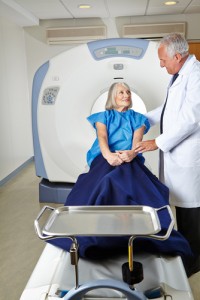 Scientists at the University of Texas MD Anderson Proton Therapy Center recently concluded a study that suggests early stage breast cancer patients can benefit from undergoing accelerated partial breast irradiation (APBI) with proton therapy, compared to whole breast irradiation (WBI).
Scientists at the University of Texas MD Anderson Proton Therapy Center recently concluded a study that suggests early stage breast cancer patients can benefit from undergoing accelerated partial breast irradiation (APBI) with proton therapy, compared to whole breast irradiation (WBI).
The study evaluated the treatments’ advantages in terms of duration and cost, and was presented at the first North America meeting of the Particle Therapy Co-Operative Group (PTCOG) held at the Proton Therapy Center.
According to the American Cancer Society, roughly 232,670 patients will be diagnosed with invasive breast cancer by the end of 2014. Fortunately, in the U.S., breast cancer is usually caught in its early stages (Stage I or II), which greatly increases the likelihood of a 5-year survival rate, and can spare patients from undergoing chemotherapy.
Today, one of the standard regimens for early stage breast cancer is breast-conserving surgery (BCS) and post-operative radiotherapy for 5 days a week, that can last as long as 6 weeks, including an entire week of “boost” radiotherapy to the original site of the tumor.
Valentina Ovalle, M.D., a postdoctoral research fellow, led this cost-effect analysis study. After taking note of common patient characteristics, Dr. Ovalle and her team used Medicare reimbursement codes to study approved charges for 8 variations of partial and whole breast radiotherapies and schedules for patients with early stage breast cancer, which comprise 98% of all available treatment options.
The researchers found that the cost of proton therapy combined with APBI amounted to roughly $13,833, while WBI together with IMRT (X-ray) was the most expensive at $19,599. On average, all 8 treatment options have a total cost of $12,784 – a close comparison to the more advanced and favorable proton therapy.
MD Anderson is an advocate of proton therapy as it has been proven to be a much more effective and tolerable treatment. This high precision treatment conforms to the exact shape of the tumor, allowing a higher dose of radiation to be delivered only where it is needed, thus sparing healthy tissue. Patients who underwent proton therapy experienced less side effects, and did not have to worry about exposing others to radiation after treatment. Additionally, APBI reduces treatment duration to only 10 sessions, twice a day for only one week.
[adrotate group=”3″]
“It is often suggested that trials of proton APBI are irrelevant due to the modality’s presumed high cost, but our data shows that this perception is false. Correcting this perpetual assumption is an important step in helping patients obtain the necessary health coverage to participate in clinical research. Further, we anticipate that because charges vary proportionately across payers, the estimated Medicare reimbursement costs likely reflect relative charges to other third-party payers.” Valentina Ovalle, M.D, said in an MD Anderson news release.
Dr. Ovalle emphasizes the need to correct the misconceptions about the costs of proton therapy and APBI. Empowering patients to choose more favorable and cost-efficient treatments would yield benefits beyond improved patient outcomes, leading to research progress, ease of professional practice among physicians, and better medical insurance coverage.

